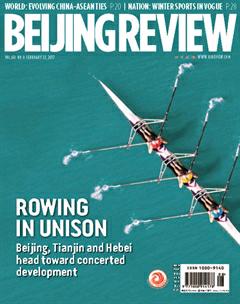Beijing-Tianjin-Hebei Synergy
The year 2017 is an important one for Beijing, Tianjin and Hebei Province. According to the plan for the integrated development of the three areas, which was issued by the Central Government in 2015, significant progress should be made by 2017 in relieving Beijing of functions that are non-essential to a capital city, and major breakthroughs should be achieved in building a traffic network linking the three areas, industrial upgrading and relocation, and environmental protection.
The campaign was initiated in a bid to balance regional social and economic development. As the capital of China, Beijing is the nations political, cultural, economic and financial center. Meanwhile, the city has also become a regional center of manufacturing and logistics, leading to the concentration of a huge number of people. Beijings problems that result from its metropolitan status such as overcrowding, traffic congestion and air pollution have received widespread attention.
Addressing the disparities in development between Beijing and its neighbors Tianjin and Hebei called for national-level planning, and the plan published in 2015 fulfills this need.
Coordinated development of the three areas doesnt simply mean easing Beijings population and moving industries out of the city. Rather, it involves optimizing the distribution of resources across the region by leveraging the three areas comparative advantages. For instance, Beijing has not relocated energy-hungry, highly polluting and water-intensive enterprises to Tianjin and Hebei, but has provided the two destinations with the technology needed to upgrade and transform such industries.
The Beijing-Tianjin-Hebei integrated development strategy is a series of measures aimed at transforming growth models, cultivating new growth drivers, boosting regional development to suit the new normal of slower economic growth, and confronting challenges such as mounting pressure on resources and the environment and imbalanced regional development.
The strategy will not only help solve the deep-seated problems accumulated during Beijings development and improve its essential functions as the capital, but also promote the overall development of the city cluster. It aims to break down administrative barriers and form a regional market with no barriers between the three areas. It will also facilitate the free flow of professionals.
Hebei, in particular, has difficulty attracting talented people due to its comparative lack of technology, funding and desirable local communities. The establishment of innovation and entrepreneurial centers under the ongoing campaign will help attract more capable professionals to the province. The local authorities will also ease their restrictions on the qualifications people from elsewhere in China need in order to be allowed to work in Hebei.

